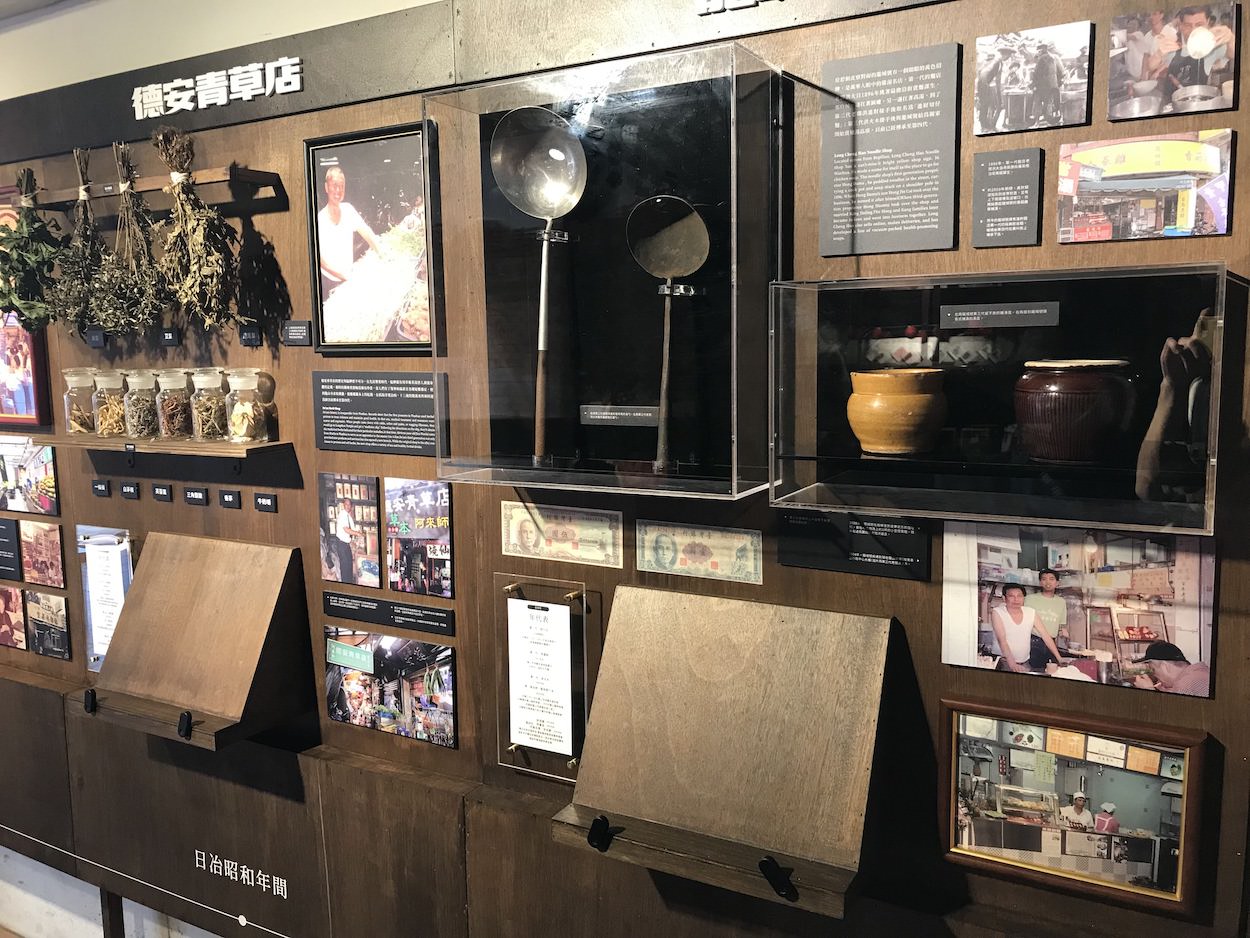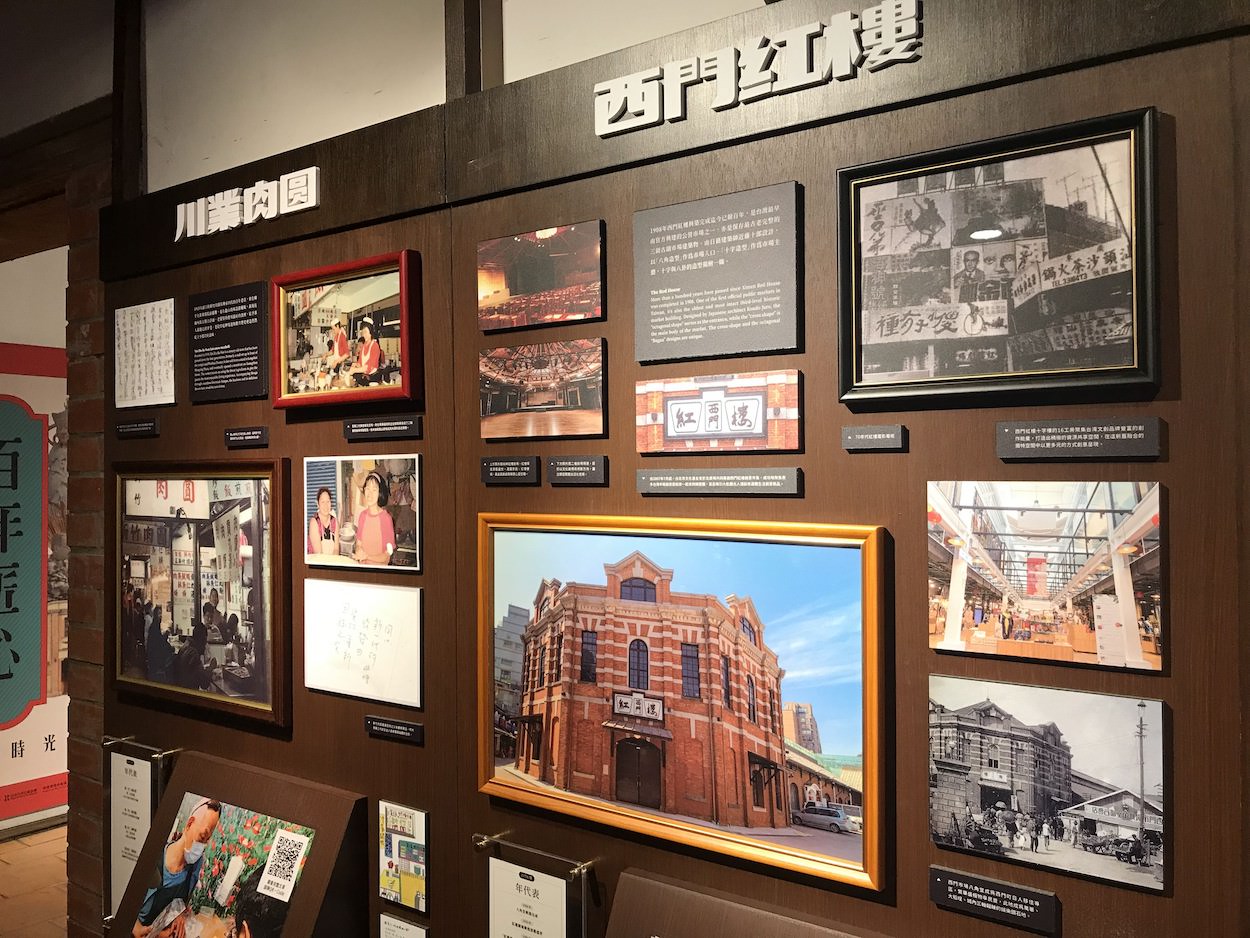by Brian Hioe
語言:
English
Photo Credit: Brian Hioe
“A CENTURY OF Craftsmanship—The Wanhua Story” is a modest exhibition, occupying two small rooms in the Bopiliao Historic Block. However, the exhibition takes on new relevance following the COVID-19 outbreak that began in May. The outbreak began in Wanhua, among tea parlors that sometimes involve sex work, and then continued to linger in the area, spreading to the First Fruit and Vegetable Market and Huannan Market in Southern Wanhua.
In particular, this is the second time that the exhibition has been displayed. Originally featuring the stories of ten establishments in Wanhua, this has now been expanded to thirteen. The exhibition was organized and curated by writer and local resident Lin Li-ching, best known for his writing on the lives of the Taiwanese working class.

Photo credit: Brian Hioe
There is a strong focus on stores that have survived in Wanhua for multiple generations, including some stores that are currently run by the sixth generation of a family. Examples include the Longshan Buddha Shop and Fulldone Old Tea.
Other stores featured include local eatery Liang Xi Hao, the Long Cheng Hao Noodle Shop, Longdu Ice Dessert Parlor, and the D’An Herbal Shop, the latter located in Herb Alley, consisting of medicinal herb stores. The Longshan Buddha Shop, the Lao Mingyu Incense Shop, and the Bangkah Church, one of the area’s oldest Presbyterian churches, touch upon the historical presence of at times competing religions. Similarly, the inclusion of the Long Life Teahouse and Fulldone Old Tea gesture toward Wanhua’s centrality in tea distribution in times past, and the Taiyo Bookbinding Company and the Rixiang Inn touch on historical practice in the area. A display for the Red House discusses primarily the architectural design of the structure during Japanese colonial times.
The exhibition takes special care to highlight how the development of Wanhua can be situated in the century-long history of Taipei. This aims to show how Wanhua has passed through various historical periods including control by the Qing dynasty, the Japanese colonial period, and after the KMT came to Taiwan, but that all of these periods left an indelible influence on Wanhua. The overall framework of the exhibition locates Wanhua in the greater history of western Taipei, perhaps in line with Ko Wen-je’s focus on developing western Taipei, though this has more been the Beimen and Dadaocheng area than Wanhua.

Photo credit: Brian Hioe
The exhibition’s displays primarily consist of text explaining the history of a store, along with photos, and artifacts. This is paired with oral history recording of shop owners. An event held by Lin Li-ching to open the exhibition invited many of these individuals, who discussed their experiences during the outbreak, situating this in the larger history of struggles that Wanhua has overcome—including plague, war, and natural disaster. There probably is an element of triumphalism to the exhibition in this sense.
Plans are to eventually expand the exhibition, in order to add more stores and more stories. Eventually, plans are for the exhibition to return, perhaps yearly. But in this sense, there is some way in which the most appropriate audience for the exhibition—which is probably not large enough or detailed enough to draw outsiders to the area—is locals themselves, in reminding them of their own history.

Photo credit: Brian Hioe
If there is a shortcoming to the exhibition, it might be that there is less focus on recent events in Wanhua than one might have otherwise hoped, seeing as the occasion for the exhibition’s revival is Wanhua having just gone through the hardship of the recent COVID-19 outbreak. Similarly, the businesses and establishments focused on in the exhibition strike as rather safe and sanitized choices—there is far less discussion of Wanhua’s large Southeast Asian migrant population or the sex work industry, for example, though this is highly visible a stone’s through away from the Bopiliao Historic Block. Similarly, though the exhibition periodizes Taiwanese history, this is generally at the macro-level, there is little discussion of the economic decline of Wanhua since the 1980s.
Perhaps all this is a bit much to be focused on in a small exhibition, Lin’s efforts are still to be praised. Though not necessarily worth the trip for those living outside of Wanhua, who may not already be familiar with the establishments focused on, the exhibition is still a worthwhile one for local residents and can serve as a reminder of local identity.



